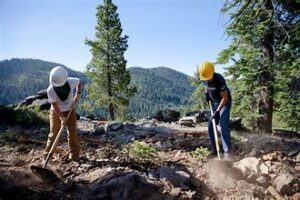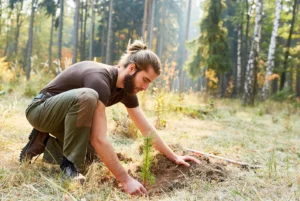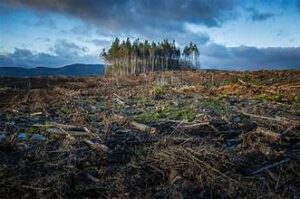Reforestation is essential for combating climate change, preserving biodiversity, and restoring degraded ecosystems. As the global community increasingly recognizes the urgency of forest restoration, innovative techniques have emerged to enhance reforestation efforts. This article highlights the top five reforestation techniques that are transforming global forest restoration efforts.
1. Assisted Natural Regeneration (ANR)
Assisted Natural Regeneration (ANR) is a technique that facilitates the natural recovery of degraded forests by improving site conditions and protecting existing vegetation. This method involves:
- Selective Removal of Invasive Species: By removing non-native plants that compete with native species, ANR promotes the growth of indigenous vegetation.
- Soil Enrichment: Adding organic matter to the soil helps improve its fertility and structure, creating a more favorable environment for natural regeneration.
- Protection from Grazing: Fencing or other measures are used to protect young plants from being eaten by livestock.
ANR is cost-effective and leverages the existing seed bank in the soil, making it a sustainable approach for large-scale restoration projects.
2. Agroforestry
Agroforestry integrates trees and shrubs into agricultural landscapes, providing multiple benefits for both the environment and local communities. Key components of agroforestry include:
- Tree-Crop Interactions: Planting trees alongside crops can enhance soil fertility, reduce erosion, and provide shade that improves crop yields.
- Diversified Income Sources: Farmers can harvest timber, fruit, and nuts, creating a more resilient and diversified income stream.
- Improved Soil Health: Tree roots help to stabilize soil and enhance nutrient cycling, reducing the need for synthetic fertilizers.
Agroforestry is particularly valuable in regions where deforestation has impacted agricultural productivity and ecological balance.
3. Mosaic Restoration
Mosaic Restoration involves restoring forests in a patchwork pattern rather than as a single large area. This technique focuses on:
- Creating Diverse Habitat Types: By restoring different patches with varying levels of vegetation density and species composition, mosaic restoration supports a wider range of wildlife.
- Enhancing Landscape Connectivity: The creation of forest corridors and buffer zones helps connect fragmented habitats, allowing wildlife to migrate and disperse more freely.
- Engaging Local Communities: Involving local stakeholders in planning and implementation ensures that restoration efforts meet community needs and priorities.
Mosaic restoration is effective in landscapes where large-scale reforestation is impractical due to land use conflicts or logistical constraints.
4. Forest Landscape Restoration (FLR)
Forest Landscape Restoration (FLR) is a comprehensive approach that aims to restore the ecological functions and social benefits of degraded landscapes. Key principles of FLR include:
- Restoring Ecosystem Services: FLR focuses on improving ecosystem services such as water regulation, soil fertility, and carbon sequestration.
- Promoting Biodiversity: By restoring a diverse range of species and habitats, FLR enhances ecosystem resilience and supports wildlife conservation.
- Integrating Land Use: FLR coordinates restoration efforts with other land uses, such as agriculture and urban development, to create a more sustainable landscape.
FLR is particularly useful in areas where forest degradation has widespread impacts on both ecosystems and human communities.
5. Direct Seeding and Planting
Direct seeding and planting involve the deliberate introduction of tree seeds or seedlings into degraded areas. This method includes:
- Direct Seeding: Seeds are sown directly into the soil, which can be a cost-effective way to reforest large areas. However, it requires careful management to ensure seedling survival and growth.
- Planting Seedlings: Pre-grown seedlings are planted in prepared sites. This approach provides more control over the species and spacing, leading to faster and more reliable forest establishment.
Direct seeding and planting are commonly used in both small-scale restoration projects and large reforestation programs, and they offer the advantage of rapid forest cover establishment.
Conclusion
Reforestation is crucial for mitigating climate change and restoring the planet’s ecosystems. The five techniques highlighted—Assisted Natural Regeneration, Agroforestry, Mosaic Restoration, Forest Landscape Restoration, and Direct Seeding and Planting—represent innovative and effective approaches to forest restoration. By employing these methods, we can enhance global reforestation efforts, support biodiversity, and promote sustainable land management practices



